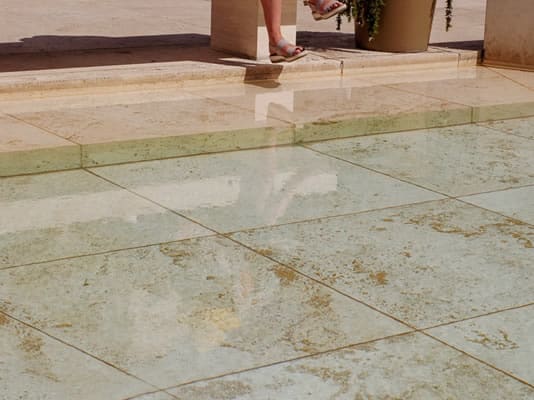How to Clean Tile Floors Without Streaks
Cleaning Tile Floors Without Streaks
Do you want your tile floors to look shiny and streak-free but have been unable to accomplish this feat? Even if you clean tile floors regularly, the incorrect mopping technique and wrong cleaning solution can result in streaks on the surface, making your tiles look dirty and grimy.
Compared to other types of floorings, tiles are durable and relatively low-maintenance. However, cleaning tile floors requires patience and the right tools. Therefore, we have put together a guide on how to get a streak-free floor that all homeowners will find quite helpful.

What You’ll Need
Here is all you need to clean tile floors without streaks:
- Broom or vacuum
- Mop
- Bucket
- Vinegar or commercial cleaner
- Spray bottle
Steps to Clean Tile Floors Without Streaks
Follow this step-by-step guide to ensure your floors look lustrous and flawless the next time you clean them.
Step 1: Sweep Loose Dirt
Loose dirt and debris can scratch and damage the surface of your tiles. They also increase the chances of streaks developing on the floor after you’ve mopped the area.
Therefore, it is crucial to sweep your tile floors before mopping them. Even if the floors look clean, spend a few minutes sweeping the room with a dust mop or broom. Starting from the furthest corner of your room, work your way to the entrance. Once you have reached the door, collect all the debris in a dustpan. Alternatively, you can vacuum the floors.
Step 2: Use the Right Cleaning Solution
Using the right cleaning solution is the key to streak-free tile floors. Depending on your preference, you can buy a commercial cleaner that is best for cleaning tile floors or mix ½ cup vinegar into a gallon of warm water to create a DIY cleaning solution.
Regardless of which option you choose, make sure the cleaner is not too weak or too concentrated. If it is not strong enough, you will not be able to clean tile floors properly. However, if it has a high concentration, it is likely to leave behind streaks or residue.
Step 3: Select the Right Mop
Though they may look somewhat similar, each type of mop serves a different cleaning purpose. For instance, sponge mops are ideal for cleaning spills and spots in a small area, whereas cotton string mops can clean large rooms. Similarly, spin mops can help remove stubborn stains, whereas microfiber mops are highly absorbent and an excellent option for cleaning tiles.
Both cotton string mops and microfiber mops are best for cleaning tile floors in residential settings.
Step 4: Improve Your Mopping Technique
When it comes to cleaning tiles, the mopping technique plays a huge role in developing streaks on the floor. If you are using a cotton string mop, dip it in the cleaning solution and wring out the excess liquid before cleaning the floors in a figure-eight pattern. When one side of your mop gets dirty, turn it over to the clean side. However, when both sides are dirty, make sure to wash the mop. Otherwise, you’ll only be spreading dirt around the room instead of cleaning it.
For a microfiber mop, spray a small section of the tile floor with the cleaning liquid and move the mop in an up-and-down motion. When the mop gets dirty, clean it in the sink to properly remove the dirt. Remember, using a dirty mop can also result in blotchy streaks on your tile floors.
Get Your Tile Floors Professionally Cleaned Today
If you want to restore your tile floors to their original sheen, the experts at Dirty Grout can help you. Please feel free to contact us for advice on how to clean tile floors and get your free estimate. You can also call or text at 941-457-4197 to get in touch with our team.
